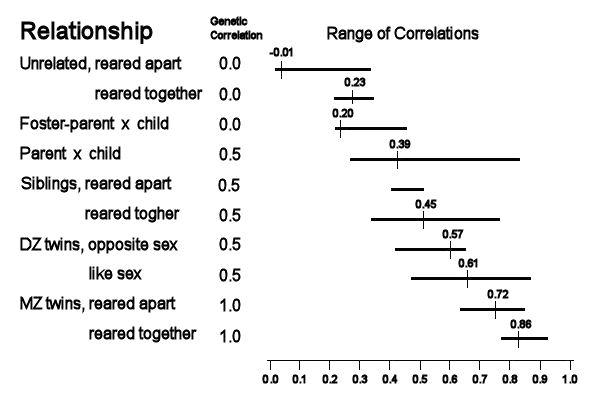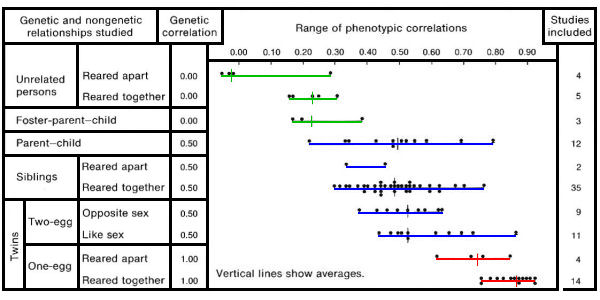
Heritability vs
Familiality:
Correlation of genetic relationship versus
performance on IQ tests

Heritability vs
Familiality:
Correlation of genetic relationship versus
performance on IQ tests
The data
shown above are from the Minnesota Twin Study, performed
in the early 1960s. The study measured statistical correlations
between performance on IQ tests with
degree of genetic relatedness (that is, the heritability of test
performance) ranked by degree of familiality
(whether or not they were raised in the same
family). There are three degrees of genetic relationship, R
= 0.0 for unrelated persons, R = 0.5 for either Parent
x Child or Sibling x Sibling (including dizygotic
twins), and R = 1.0 for monozygotic,
identical twins. The data show that related persons have more
similar IQ test scores
than do unrelated persons, and that the similarity increases
with degree of relatedness. The first figure below aggregates
multiple studies of phenotypic correlations by degree of
relatedness irrespective of familiality.

1. Identical twins raised
together are markedly more similar than those raised apart.
This indicates that environment has
significant influence on IQ test scores. This is
further confounded by the likelihood that identical twins, even
when adopted into separate families, are likely to be placed and
raised in similar socio-economic environments.
2. When reared together in the
same family, pairs of unrelated persons including
adoptive children of foster parents, sibs, and identical twins
are on average more similar than those raised apart.
This indicates that familiality has
significant influence on IQ test scores.
3. Two-egg twins of like sex
are somewhat more similar than those of opposite sex:
the former are more likely to be treated similarly than the
latter, as are one-egg twins (always of the same sex).
4. Parent-child pairs
show a range of similarity (0.2 ~ 0.8) that
overlaps both that of unrelated persons and twins.
